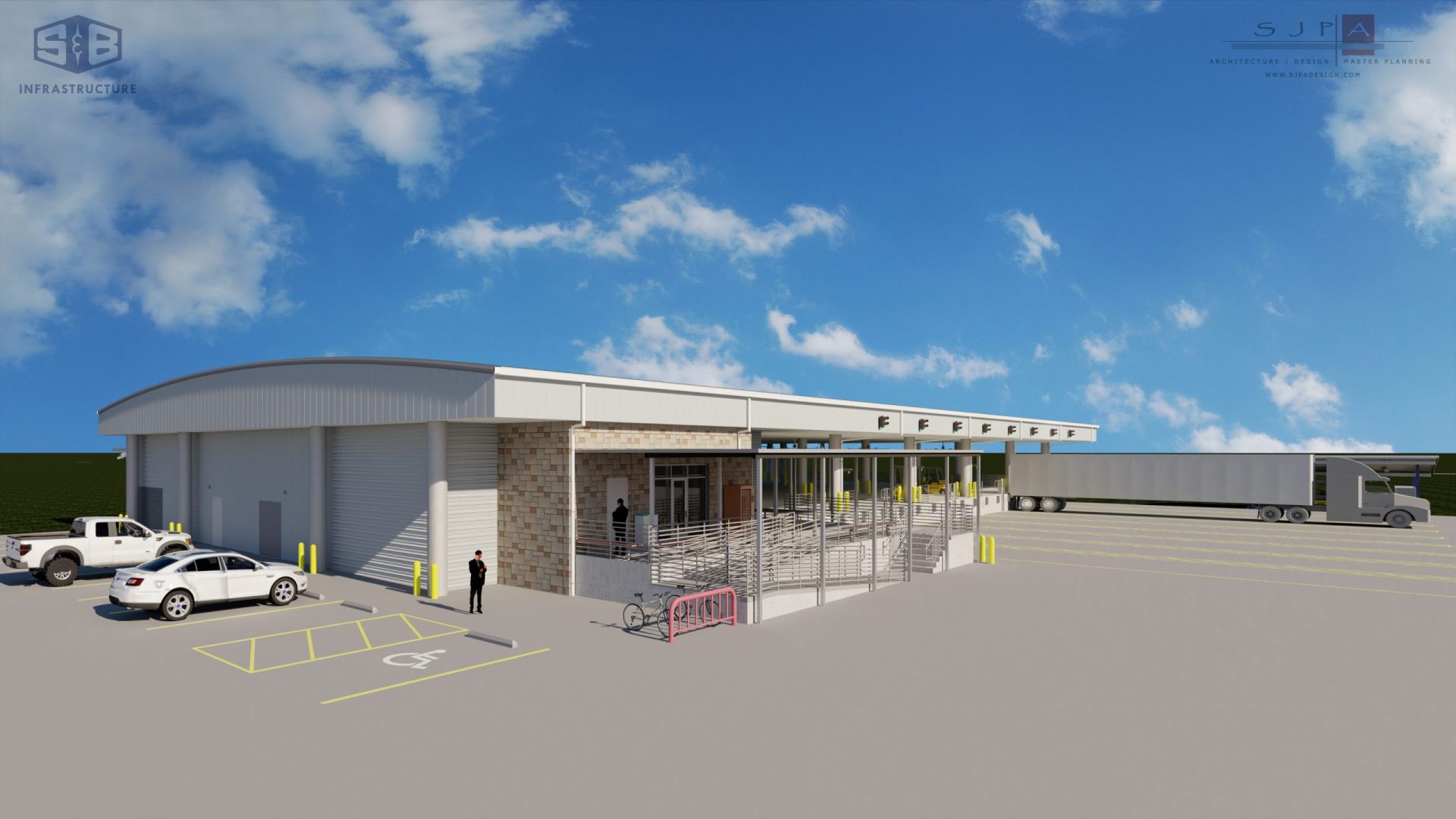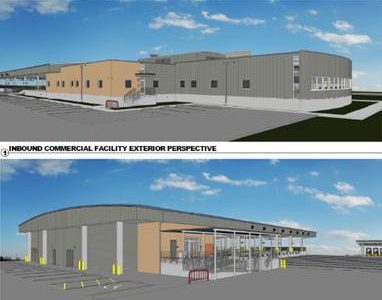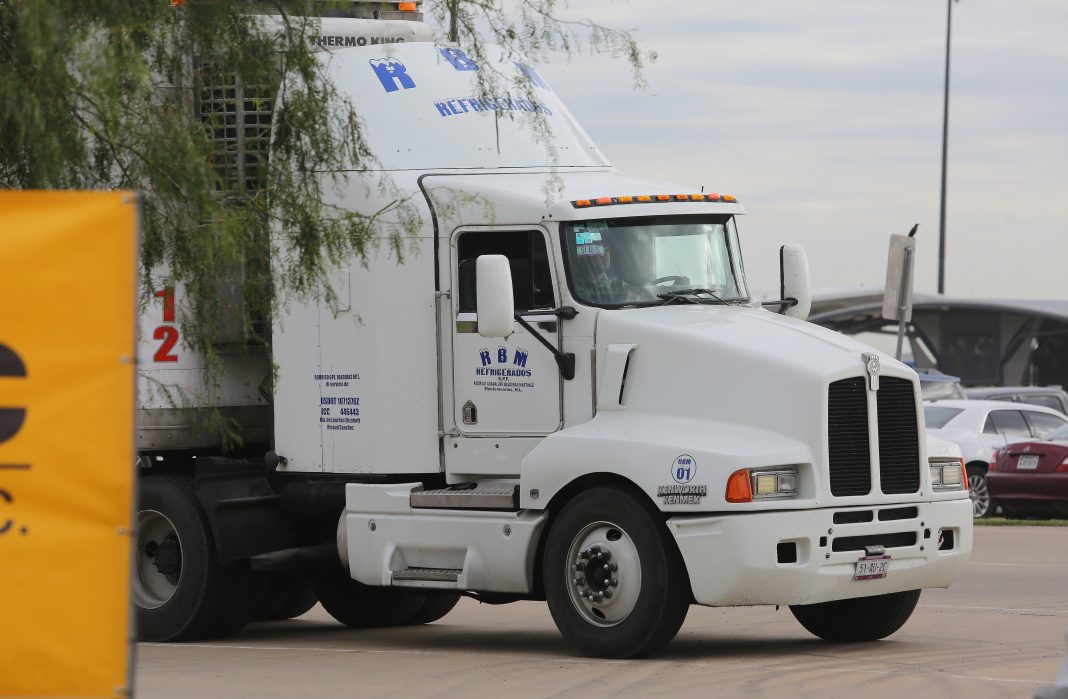With the continued increase of imports from Mexico, having these additional spaces and improvements will have a significant positive impact on our ability to expedite the processing time and get shipments on their way into U.S. commerce.
After breaking ground on the project in October, crews began work on a project to expand the Anzalduas International Bridge into a full-service cargo port of entry.
The General Services Administration, U.S. Customs and Border Protection and the Anzalduas International Bridge Board announced the start of construction last week on the new infrastructure that will enable it to process southbound and northbound commercial traffic.
The new southbound facilities will be located on the west side of the port of entry and improvements will include upgrading the empty commercial inspection area, according to a news release issued by CBP.
Other improvements include access roads, a primary outbound inspection booth, eight commercial secondary inspection bays, an exit and control booth and an export/cargo processing office.
The northbound facilities will be located on the east side of the port of entry and will include Unified Cargo Processing technology to assist Mexican customs and U.S. CBP officers in their inspection of incoming cargo to expedite the process of clearing them.
The expansion will also include:
>> six commercial inspection lanes;
>> pre-primary non-intrusive inspection technology;
> 30 secondary inspection bays, cargo processing and administrative offices;
>> an operations command center;
>> a Free and Secure Trade (FAST) lane dedicated for the Customs-Trade Partnership Against Terrorism (C-TPAT);
>> a HAZMAT facility;
>> U.S. Department of Transportation inspection facility;
>> parking lot expansion;
>> roadway pavement upgrades.

“With the continued increase of imports from Mexico, having these additional spaces and improvements will have a significant positive impact on our ability to expedite the processing time and get shipments on their way into U.S. commerce,” Port Director Carlos Rodriguez said in the news release.
The additional lanes and improvements to the infrastructure are meant to help accommodate the city of McAllen’s growing economy, according to Pete Flores, the executive assistant commissioner for the Office of Field Operations.
With our vision and the partnership among the different cities, I anticipate that by 2050, we will have one of the best and biggest economies in Texas.
Flores added the project will also reinvigorate the economic vitality of the city by creating new international trade opportunities and by incentivizing new local jobs.
The Anzalduas bridge — owned and operated by the city of McAllen in partnership with the cities of Hidalgo and Mission — opened in 2010 for pedestrian and passenger vehicle traffic.
In 2016, though, the bridge opened to southbound empty truck traffic.
Currently, the Anzalduas port of entry sees about 2,500 to 5,000 commercial vehicles on any given day, according to CBP. They also note the bridge is strategically positioned on the border due to its proximity to over 250 manufacturing facilities.
Allowing more commercial traffic through the Anzalduas port of entry, Hidalgo Mayor Sergio Coronado said, would play a vital role in the local economy as well as the overall U.S. economy.
“Over 2.4 billion worth of goods and services cross the Mexico-U.S-Canada borders every single day,” Coronado said during the groundbreaking ceremony in October. “Most importantly, the total international trade for Texas is over $1 billion on a daily basis. Those facts show the dimension of the free trade agreement. We should take advantage of it and expand our potential to benefit our region.”

He added the project is expected to attract more industry, business and, as a result, more jobs.
“With our vision and the partnership among the different cities, I anticipate that by 2050, we will have one of the best and biggest economies in Texas,” Coronado said.
The approximately $88 million price tag for these improvements will be funded by a $22 million grant the city of McAllen received from the Texas Department of Transportation through the Metropolitan Planning Organization and a $25 million grant from the U.S. Department of Transportation.
McAllen also received a loan of up to $63 million from the North American Development Bank that will cover the remaining balance. The city will pay back the loan with revenue from the bridge.
The city will then donate the facilities to CBP through their Donations Acceptance Program.
McAllen Mayor Javier Villalobos, who also serves as chairman of the Anzalduas International Bridge Board, stressed the commitment of the city and the bridge board to work with federal partners on expediting traffic and trade at the international bridges.
“We are proud to partner with CBP on this and other Donations Acceptance Program projects that provide creative solutions to meet and address specific federal needs at the local level and keep international trade and commerce flowing swiftly and smoothly,” Villalobos stated in the news release.
Construction is expected to take approximately two years.
PREVIOUS COVERAGE:
Photo Gallery: Construction begins on Anzalduas bridge cargo facilities




